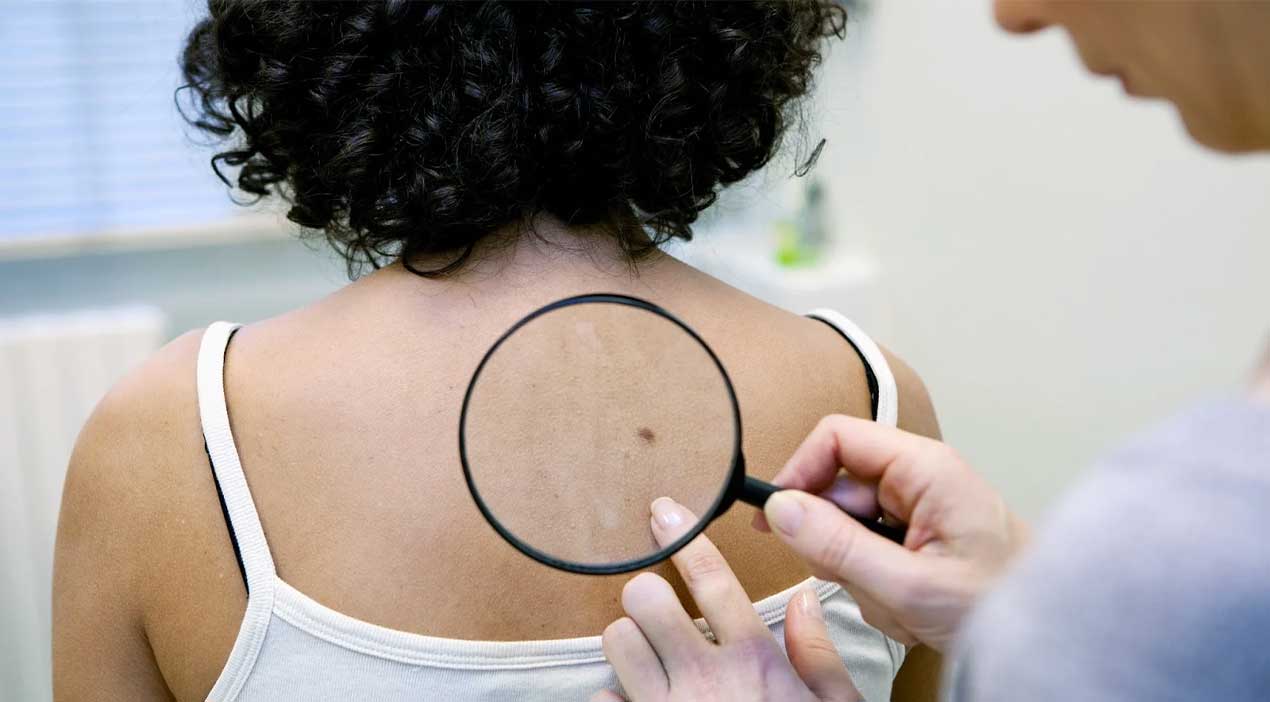Skin cancer is one of the most common types of cancer in America. It is also the easiest to cure if diagnosed and treated early. The Skin Cancer Foundation recommends that everyone do a monthly head-to-toe examination of their skin. What should you be looking for? And when is it time to see the doctor? Read on for some basic guidelines.

Types of skin cancer
There are several kinds of skin cancer. The three most common are basal cell cancer, squamous cell cancer, and melanoma.
Basal cell cancer
This is the most common form of skin cancer, affecting about 1 million Americans each year. It commonly forms on areas of the skin that are exposed to the sun, but can be anywhere. They may look like raised, firm bumps on the skin, or they may form ulcers. Tangles of blood vessels may be prominent. Another kind called superficial basal cell cancers can appear slightly scaly, perhaps shiny or spotty. It usually only gets larger and rarely spreads to other parts of the body. There are other, less common types as well.
Squamous cell cancer
This is the second most common kind of skin cancer. It is also related to sun exposure. Half of all cases are on the head and neck. There are several different types of appearance. It can be a red, flesh-colored or pigmented, firm or scaly skin lesion that has a crusty surface. It may crack or bleed. It can be fleshy or soft. It can have ulceration. There are other varieties as well. All can spread to other parts of the body and appear in chronic wounds.
Melanoma
Although less common, this is the most dangerous form of skin cancer. There are many sub-types, which have slightly varied appearances. Recognizing a melanoma can be challenging, even for the most experienced healthcare providers. Therefore, if there is any question, it is important to have an early evaluation and if appropriate, a biopsy. Melanomas can appear as a skin lesion with irregular color and irregular borders, also as nodules or even as polyps. They can start as a tan-brown freckle and then change to a darker color or asymmetrical in shape. There are other appearances as well.
What to look for in a skin exam
There are three main types of skin cancer and each has a different appearance. Pain is not necessarily an indicator that something is wrong, any suspicious spot could be a sign of cancer. Some signs that a spot could be cancer are:
- Asymmetric shape (one side of the lesion doesn’t look like the other)
- Bleeding or cracking
- Irregular border
- Irregular color or mixed color
- Larger than 1/4 inch (6 mm)
- Appearance of blood vessels in the lesion
- Change in size, color, or shape
- A skin lesion that doesn’t heal
- A new or growing lesion
If there is a new or enlarging lesion, a change in shape or a change in color, if size is greater than a quarter inch, inflammation, crusting, bleeding, or sensory change, then the lesion needs should be evaluated by a doctor.
Step by Step Skin Check from the Skin Cancer Foundation
Skin care at Logansport Memorial Hospital
Many people have harmless skin lesions, and have had them for years, or even all of their lives. However, skin lesions can cause problems. If you have a new, changing, bothersome or suspicious lesion, make an appointment with Dr. Alan Anthony in Dermatology: 574-753-2222.





